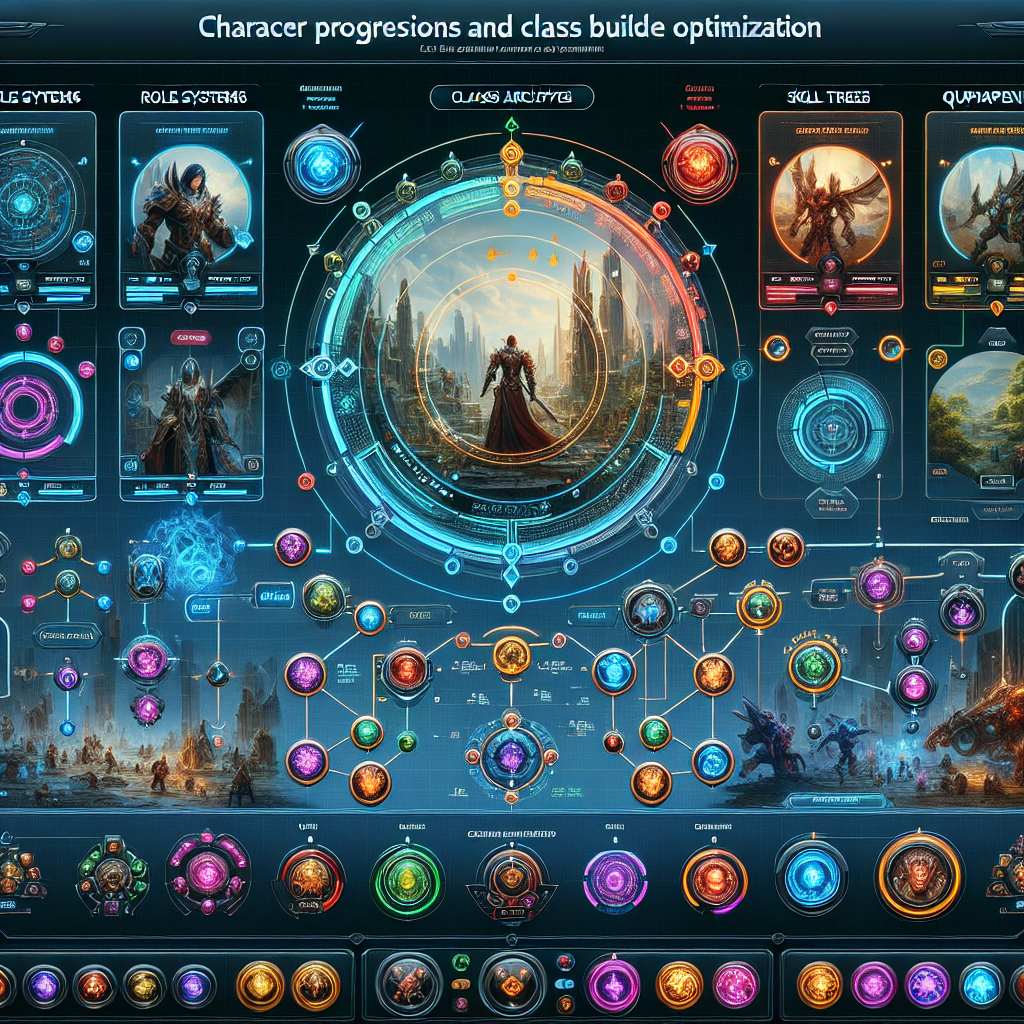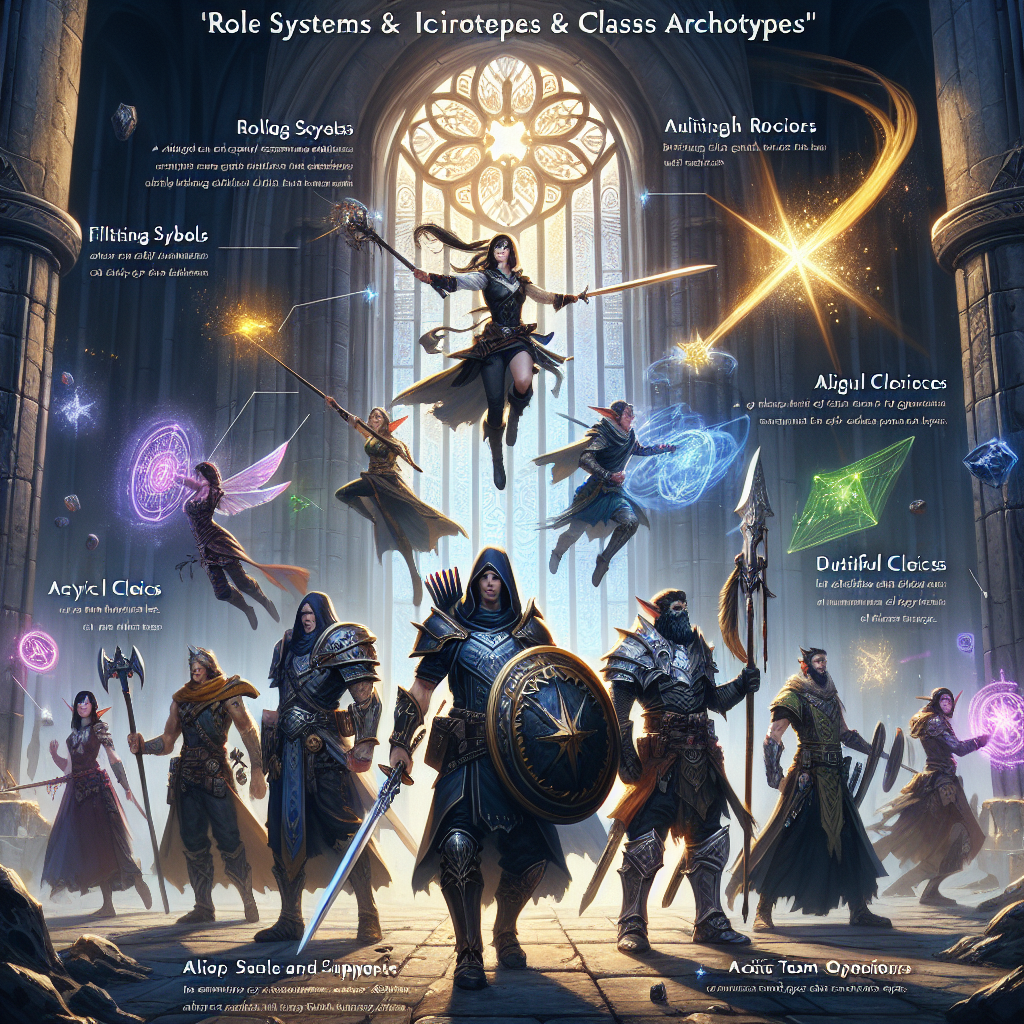The DNA of MMO Characters: Exploring Role Systems and Class Archetypes
In the ever-evolving landscape of massively multiplayer online (MMO) games, the foundation of character development lies in the intricate interplay between role systems and class archetypes. These fundamental design elements not only shape the gameplay experience but also serve as the DNA that defines the very essence of each virtual persona. As entrepreneurs, freelancers, and tech enthusiasts, understanding these core game mechanics can provide valuable insights into the psychology of player engagement, user retention, and the art of crafting compelling digital experiences.
Unraveling Role Systems: The Bedrock of MMO Characters
At the heart of any MMO character lies a role system, a framework that determines the primary function and capabilities of a given persona. These roles often serve as the cornerstones of party-based gameplay, where players must work in concert to overcome challenges and achieve collective objectives.
The Trinity: Tank, Healer, and Damage Dealer
The classic role system in MMOs is often referred to as the "Trinity," which consists of three distinct archetypes:
- Tank: Responsible for drawing the attention and attacks of enemies, the tank is the front-line defender who protects their allies from harm.
- Healer: Tasked with restoring the health and well-being of their party members, the healer ensures the group's survival and sustains the team's momentum in combat.
- Damage Dealer (or "DPS"): Specializing in delivering high-impact attacks, the damage dealer focuses on eliminating threats and swiftly dispatching foes.
The Trinity is a fundamental paradigm that has been a staple of MMO design for decades, as it fosters an interdependent and collaborative gameplay experience. Players must understand their roles and work together to overcome the challenges presented by the game.
Expanding the Roster: Hybrid and Specialized Roles
While the Trinity remains a prevalent model, many modern MMOs have introduced a more diverse array of roles to cater to a wider range of player preferences and playstyles. These expanded role systems often include:
- Hybrid Roles: Characters that blend the attributes of multiple archetypes, such as a "Battle Healer" who can both deal damage and provide support, or a "Paladin" who can tank and heal.
- Specialized Roles: Unique roles that address specific tactical needs, like a "Crowd Control" specialist who can immobilize or debuff enemies, or a "Ranged Damage Dealer" who excels at long-range attacks.
- Utility Roles: Characters that provide valuable support functions, such as a "Buff/Debuff" specialist who can enhance allies or debilitate foes, or a "Crowd Controller" who can manipulate the battlefield.
These expanded role systems allow for greater customization and strategic depth, as players can choose characters that better suit their individual playstyles and contribute to the party's overall effectiveness.
Defining Class Archetypes: The Visible Face of MMO Characters
While role systems define the underlying functions and capabilities of a character, class archetypes are the visible representations that players interact with and identify with. These archetypes often draw inspiration from established fantasy tropes and cultural references, shaping the visual aesthetics, abilities, and narratives of each virtual persona.
The Quintessential Archetypes
Some of the most recognizable class archetypes in MMOs include:
- Warrior: A melee-focused combatant who excels in close-quarters combat, often wielding heavy weapons and heavy armor.
- Mage: A spellcaster who harnesses the power of elemental magic, typically dealing damage from a safe distance.
- Rogue: A stealthy, agile character who specializes in hit-and-run tactics, assassinations, and utility abilities.
- Cleric: A pious healer who uses divine magic to restore the health and well-being of their allies.
- Ranger: A versatile combatant who blends ranged attacks, tracking abilities, and wilderness survival skills.
These archetypes have become staples of the genre, as they tap into deeply ingrained cultural tropes and provide players with instantly recognizable roles to embody.
Evolving Archetypes: Hybridization and Specialization
Similar to the expansion of role systems, many MMOs have introduced novel class archetypes that blend or specialize existing tropes. These include:
- Hybrid Classes: Characters that combine the attributes of two or more traditional archetypes, such as a "Battle Mage" who can both cast spells and engage in melee combat.
- Specialized Classes: Unique archetypes that focus on a specific tactical niche, like a "Summoner" who can conjure and command powerful creatures, or a "Necromancer" who manipulates the forces of death.
- Unconventional Classes: Archetypes that depart from the fantasy genre, such as a "Technomancer" who blends futuristic technology with magical abilities, or a "Bard" who uses music and performance to support their allies.
These evolving class archetypes allow for greater customization and differentiation, catering to a diverse player base with unique preferences and playstyles.
Bringing It All Together: Crafting Compelling MMO Characters
The interplay between role systems and class archetypes is the foundation upon which MMO characters are built. By understanding these core game mechanics, entrepreneurs, freelancers, and tech enthusiasts can gain valuable insights into the design principles that drive player engagement, retention, and the overall appeal of virtual worlds.
Balancing Roles and Archetypes
Successful MMO design requires a delicate balance between the various roles and archetypes available to players. Each character must have a clearly defined function and set of capabilities that complement the overall party composition, while still allowing for meaningful strategic choices and character customization.
Developers must also carefully consider the power dynamics and synergies between different roles and archetypes, ensuring that no single combination dominates the meta or renders other options obsolete. This balance is crucial for maintaining a healthy, dynamic, and engaging player ecosystem.
Fostering Interdependence and Collaboration
The most compelling MMO characters are those that foster a sense of interdependence and collaboration within the party. By emphasizing the unique strengths and weaknesses of each role and archetype, developers can encourage players to work together, strategize, and rely on one another to overcome challenges.
This collaborative dynamic not only enhances the sense of camaraderie and community within the game but also provides a platform for meaningful social interactions, where players must communicate, coordinate, and adapt to the changing needs of the party.
Embracing Diversity and Player Expression
As MMO landscapes continue to evolve, the diversity of role systems and class archetypes has become a critical factor in player engagement and retention. By offering a wide range of options, developers empower players to create characters that truly reflect their individual preferences, playstyles, and narratives.
This emphasis on player expression and customization fosters a sense of ownership and investment, as players become deeply attached to their virtual personas and are motivated to explore the nuances of each role and archetype.
Key Takeaways
- Role systems and class archetypes are the fundamental building blocks of MMO character design, defining the functions, capabilities, and visual representations of virtual personas.
- The classic "Trinity" of tank, healer, and damage dealer remains a prevalent model, but many MMOs have introduced expanded role systems and hybrid/specialized archetypes to cater to a wider range of player preferences.
- Balancing roles and archetypes, fostering interdependence and collaboration, and embracing diversity and player expression are key principles in crafting compelling MMO characters that drive engagement and retention.
- Understanding these core game mechanics can provide valuable insights for entrepreneurs, freelancers, and tech enthusiasts looking to leverage the psychology of player engagement and the art of digital experience design.
Final Thoughts
The DNA of MMO characters is a complex and multifaceted tapestry, woven with the intricate interplay of role systems and class archetypes. By delving into these foundational game mechanics, entrepreneurs, freelancers, and tech enthusiasts can unlock a deeper understanding of player motivations, the dynamics of collaborative gameplay, and the art of crafting immersive virtual worlds. As the genre continues to evolve, mastering these principles can pave the way for the creation of truly engaging and captivating digital experiences.





